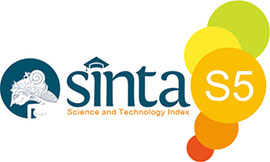Merdeka dari Teknologi atau Teknologi yang akan Memerdekakan dalam Permasalahan Pembelajaran di Era Kekinian
 ), Septriyan Anugrah(2), Diah Anggraini Austin(3),
), Septriyan Anugrah(2), Diah Anggraini Austin(3), (1) Universitas Negeri Padang
(2) Universitas Negeri Padang
(3)
 Corresponding Author
Corresponding Author
DOI : https://doi.org/10.24036/et.v12i2.132384
Full Text:
 Language : id
Language : id
Abstract
Technological developments have brought significant changes to the world of education, especially in facing learning challenges in the current era. This article discusses the dilemma between "independence from technology" and "liberating technology" as a solution to overcoming learning problems. On the one hand, dependence on technology can create a digital divide, reduce social interaction, and increase cognitive load. On the other hand, technology has great potential to improve access to education, personalize learning, and optimize the efficiency of the teaching and learning process. This article uses a literature study and comparative analysis approach to explore the advantages and disadvantages of the two approaches. The results of the analysis show that the choice between the use or non-use of technology must consider the local context, student needs, and infrastructure readiness. As a solution, a hybrid approach that combines technology with traditional methods is recommended to ensure inclusive, effective and relevant learning. Thus, both independence from technology and liberating technology can play a role in creating an adaptive and sustainable education system.
Keywords: independent learning, educational technology, contemporary learning, digital divide, hybrid approach.
References
Dewantara, K. H. (2013). Pendidikan: Pemikiran, Konsep, dan Gagasan Ki Hadjar Dewantara. Yogyakarta: UST Press.
Edutopia. (2022). "How Technology Enhances Teaching and Learning." Retrieved from www.edutopia.org
Ertmer, P. A., & Ottenbreit-Leftwich, A. T. (2010). "Teacher Technology Change: How Knowledge, Confidence, Beliefs, and Culture Intersect." Journal of Research on Technology in Education, 42(3), 255–284.
Heick, T. (2019). "Blended Learning and the Role of Technology in Personalized Learning." Journal of Educational Technology Development and Exchange, 12(1), 1–18.
Kemendikbudristek RI. (2023). Portal Merdeka Belajar. Retrieved from www.merdekabelajar.kemdikbud.go.id
Kementerian Pendidikan dan Kebudayaan Republik Indonesia. (2020). Panduan Merdeka Belajar. Jakarta: Kemendikbud.
Mayer, R. E. (2005). The Cambridge Handbook of Multimedia Learning. Cambridge: Cambridge University Press.
OECD. (2021). The Digital Transformation of Education. Retrieved from www.oecd.org
Rogers, E. M. (2003). Diffusion of Innovations. New York: Free Press.
Siemens, G. (2005). "Connectivism: A Learning Theory for the Digital Age." International Journal of Instructional Technology and Distance Learning.
Sweller, J. (1988). "Cognitive Load During Problem Solving: Effects on Learning." Cognitive Science, 12(2), 257–285.
UNESCO. (2020). COVID-19 and Education: The Role of Digital Technologies in Learning Continuity. Paris: UNESCO.
Warschauer, M. (2006). "Laptops and Literacy: Learning in the Wireless Classroom." Teachers College Record, 108(11), 2491–2520.
 Article Metrics
Article Metrics
 Abstract Views : 14 times
Abstract Views : 14 times
 PDF (Bahasa Indonesia) Downloaded : 7 times
PDF (Bahasa Indonesia) Downloaded : 7 times
Refbacks
- There are currently no refbacks.





